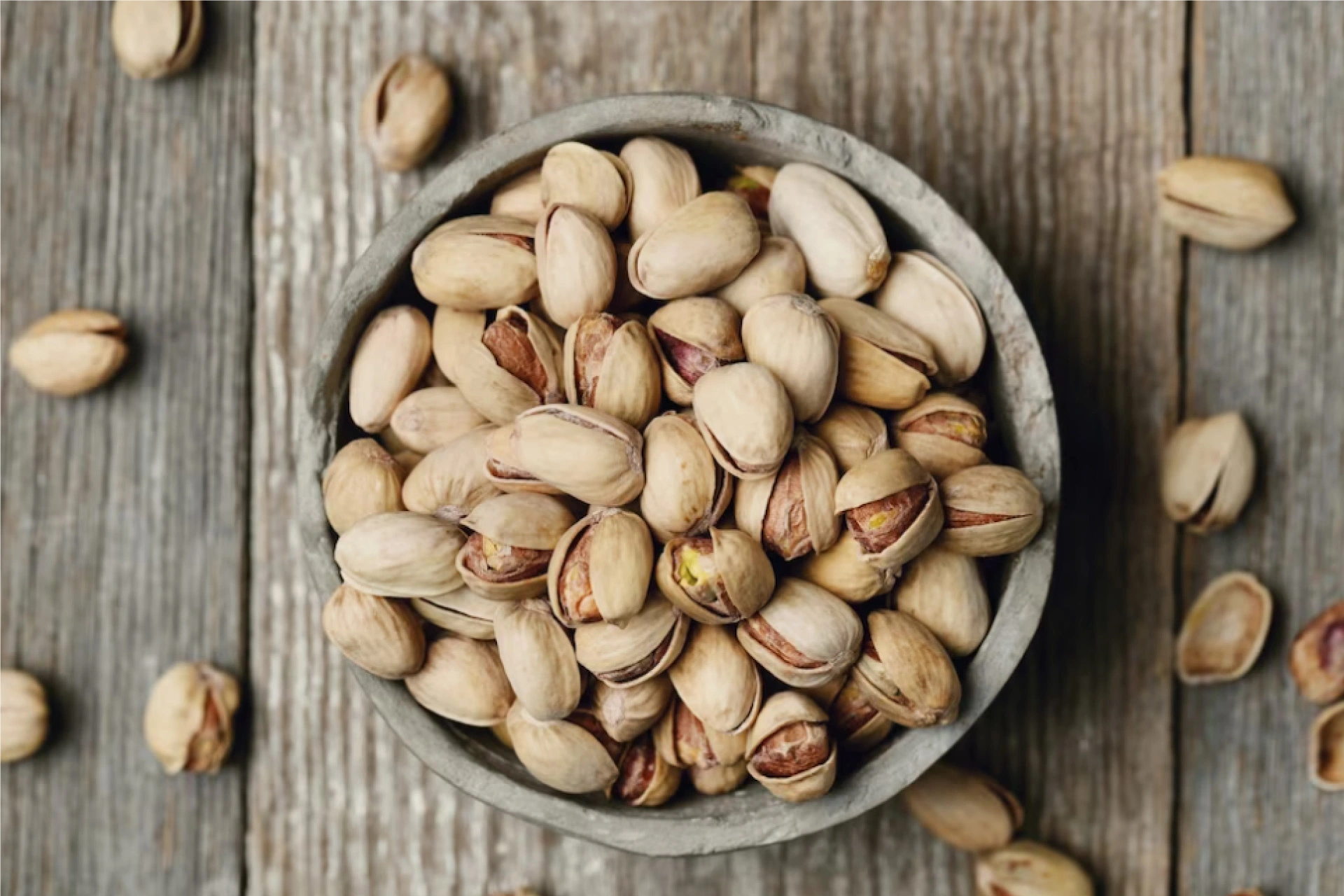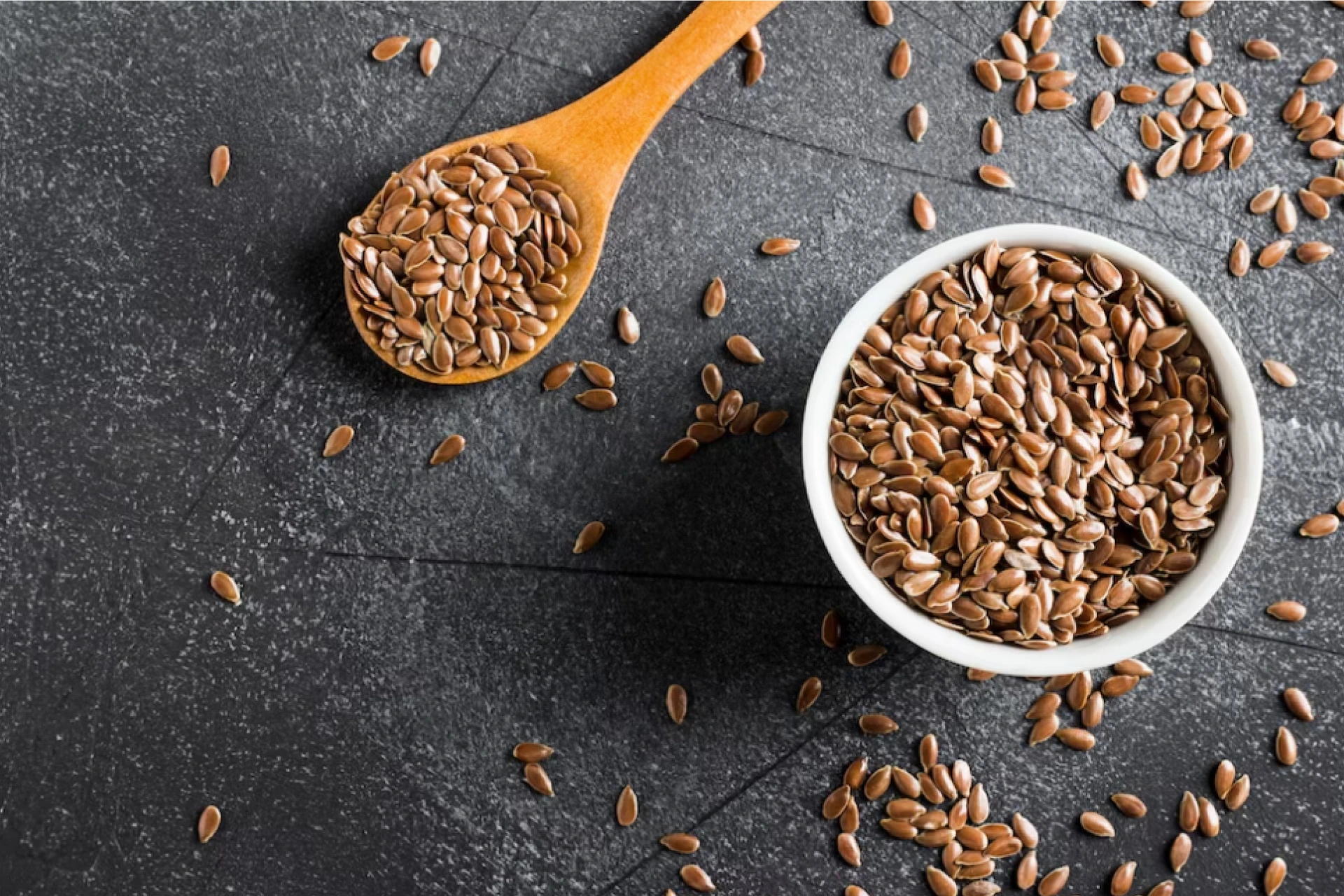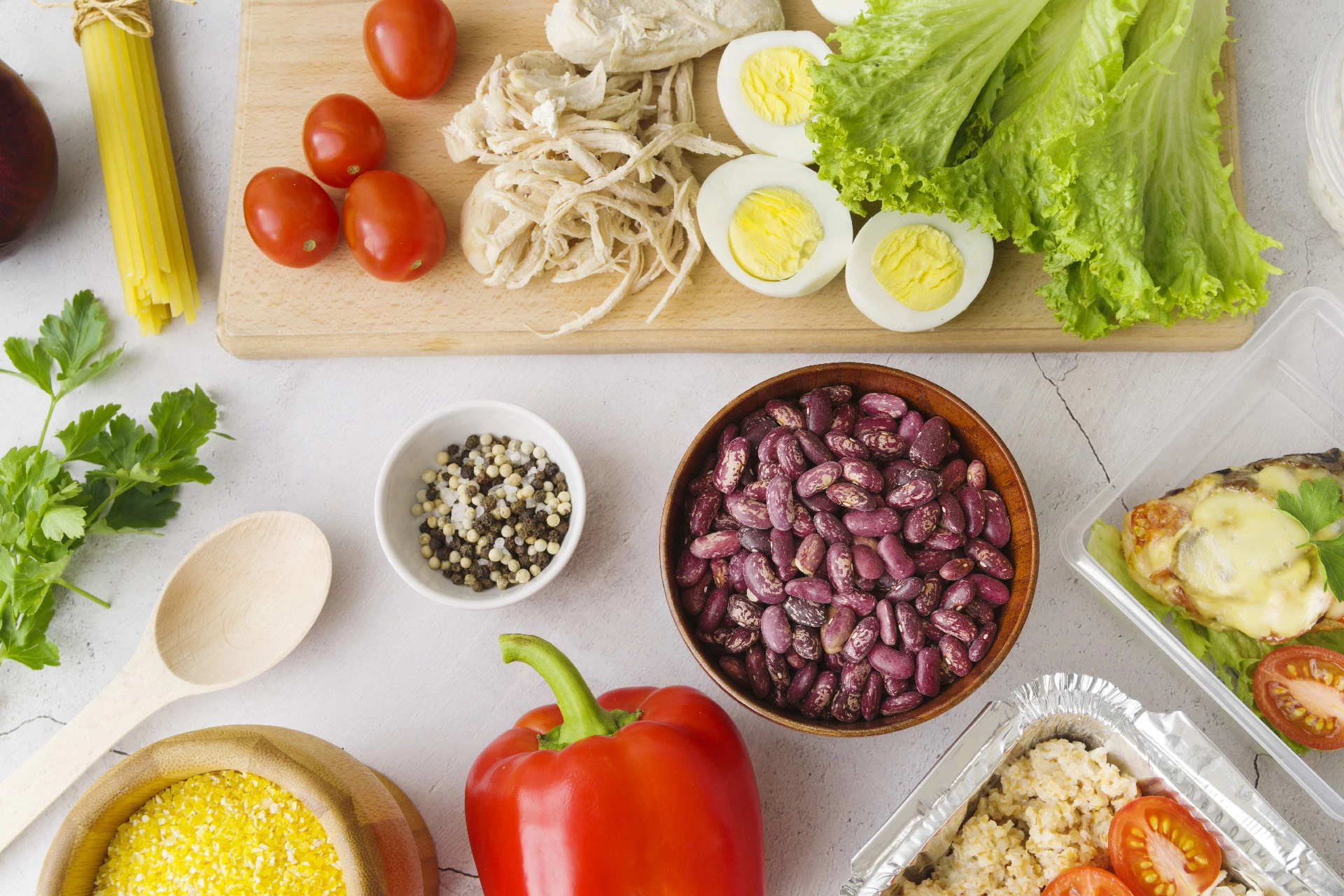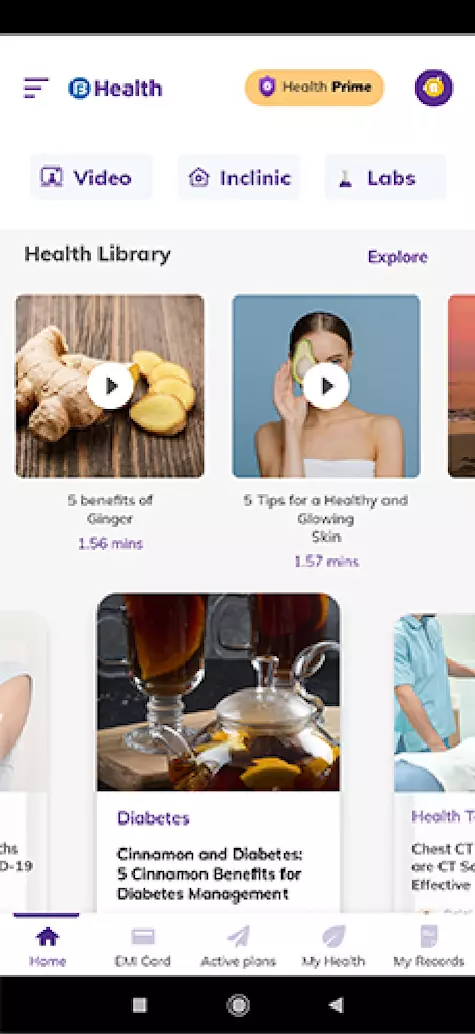Nutrition | 21 min read
Protein Rich Food: Top 22 Delicious High Protein Foods List
Medically reviewed by
Table of Content
Key Takeaways
- Protein rich foods are macronutrient that your body needs for proper growth and maintenance.
- Whether you are a vegetarian or non-vegetarian, there are plenty of high protein rich foods that you can consume.
- One should have a optimum amount of protein depending upon their age, size, activities or preganancy status.
Protein is vital to life and is a macronutrient that your body needs for proper growth and maintenance. One should eat an optimal amount of protein rich foods depending upon their age, size, activities, or pregnancy status. Read on to learn about what are the high proteins foods for vegetarians and non-vegetarians, understand why and how to incorporate them into your diet.
What is Protein?
Proteins are molecules consisting of amino acids that our bodies need. In fact, each cell in our body houses a range of different proteins. Protein is essential to muscle growth, aids bone health improves metabolism helps in tissue repair, and can even reduce blood pressure and belly fat.
22 Best Protein Rich Foods to Add to Your Diet
A food is considered protein rich when 25% of its calories are contributed by protein content in it. There are many rich protein foods available in the market. Below is a list of protein rich foods for vegetarians and non-vegetarians to choose from.
- Vegetables, legumes, and grain
- Protein rich fruits
- Nuts and seeds
- Dairy products
- Meat and Poultry
- Seafood

Vegetables, Legumes, and Grain
Wondering how can vegetarians get 100g of protein a day? Here is a list of vegetarian foods that will help you.
1. Pinto beans
Pinto beans are extremely nutritious, plumper, and lighter looking than red kidney beans and contain a cup full of every good nutrient your body needs. They provide you with protein, fiber, sodium, thiamine, iron, magnesium, potassium, and phosphorus.
- Protein value: ½ cup of pinto beans contains 11g of protein and 197 calories.
Pinto beans are one of the protein-rich foods that you can enjoy every day. You can eat half a cup of pinto beans, around 86g, and get all the nutritional benefits. The best way to cook them is by boiling them in water and adding them to your salad recipe, making your meal flavorful and nutritious.
2. Lentils
This humble Indian staple, a favorite for those who love dal, is a great source of protein. Green mong, chickpea, urad dal, toor dal, and horse gram are all lentils. Although they aren’t expensive, they provide you with a host of B vitamins, a huge helping of nutrients, such as folate, pantothenic acid, and zinc, and are 25% protein.
- Protein value: ½ cup of lentils contains 9g of protein and 101 calories.
Like beans, you can have these protein-rich foods up to 3 cups in a week. This rounds up to ½ a cup every day. You should also mix them up with different protein-rich foods to ensure better balance in your nutrition. Because they don’t require pre-soaking, the best way to cook them is by boiling them with a little salt.
3. Quinoa
Quinoa is called a ‘super grain’ and is rich in fiber and protein. In the Indian kitchen, it is used to replace rice in any dish, such as a quinoa pulao, and there are tons of delicious recipes, including salads, that you can look up to get a tasty meal ready. Among its top nutrients are manganese, magnesium, and phosphorus.
- Protein value: ½ cup of quinoa contains 4g of protein and 111 calories.
Consuming around one cup of cooked quinoa can be a great way to add protein in your daily diet. To cook it, try boiling and mixing it with vegetables and other protein-rich foods. This way you can enjoy a healthy and flavorful balanced diet. Remember to soak them before cooking to ensure that you cook quinoa perfectly.
Additional Read: Low Cholesterol diet plan4. Adzuki beans
Adzuki beans find their way into Punjabi, Gujarati, and Maharashtrian dishes. While being chock full of the regular list of nutrients, like folate and manganese, adzuki beans also provide you with antioxidants. The bean is sometimes called aduki or azuki.
- Protein value: ½ cup of adzuki beans contains 9g of protein and 147 calories.
Given that adzuki beans are a type of beans, you should to consuming the ideal consumption of beans and lentils, i.e. ½ a cup daily or 3 cups weekly. One of the simplest and easy way to cook these protein-rich foods is by cooking them with water. You can presoak them to reduce your cooking time but it is not necessary.
5. Black beans
Indian cuisine has no shortage of black bean recipes, from dals to curries, and black beans are a good source of protein, folate, and fiber. Interestingly, some studies show that black beans may reduce the surge in blood sugar after meals. So, eating black beans and rice is better than consuming rice alone.
- Protein value: ½ cup of black beans contains 7.6g of protein and 114 calories
Being among the best protein rich foods, black beans can help you meet your protein intake with ease. All you have to do is consume half a cup of black beans with your other favorite foods. The easy way to cook black beans is soak them in water for some time and then boil until tender and add seasoning according to your taste. Once boiled, you can add them to any recipe to make it healthy and flavorful.
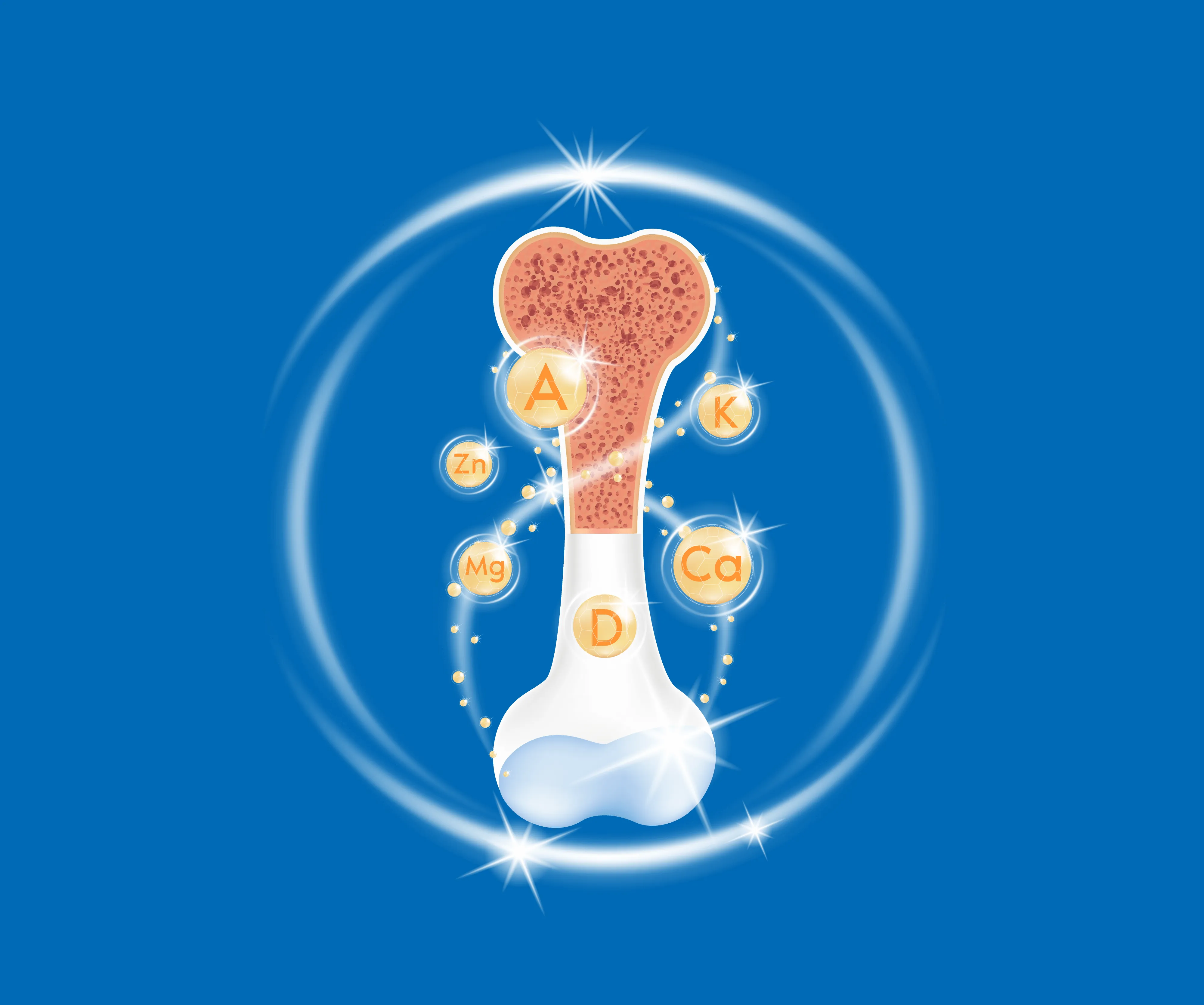
Protein Rich Fruits
6. Guava
Guava fruit is one of the top sources of protein. It has more protein than any other fruit. It is also packed with fiber and essential antioxidants. That’s not all. A single serving of the fruit offers 4 times your daily vitamin C needs. Take a bite of guava or add it to smoothies. Have it along with other protein rich foods like yogurt or add it to fruit salad to enjoy the delicious treat. Protein value: 1 cup (165g) of guava contains 4.2g of protein and 112 calories.
Ideally, you can safely eat one ripe guava a day. To know if it ripe, check its color. It should be light green to yellow in color. Slices of guava can be a quick and great way to add guava in your daily diet. You can add the slices as a garnish to any of dish and enjoy the benefits of one of the best protein
7. Avocado
This healthy fruit makes it to the top list of high-protein fruits. It is only second to guava in protein content. This versatile superfood can be consumed in its fruit form or added to a milkshake. You can even add it as one of the ingredients of healthy fruit and veggie salad. Protein value: 1 cup (150g) of avocado contains 3g of protein and 240 calories.
Ideal consumption of avocado depends on your overall diet. If you consume healthy fat food, you should eat less than half of an avocado every day. For a quick and healthy way of cooking, try grilling avocado to make a great, healthy side dish.
Also Read: Avocado Benefits
8. Jackfruit
It is a spiky relative of the fig popularly consumed in places like India, Indonesia, and the Philippines. It makes a perfect vegan meat substitute. The fruit is food rich in protein, vitamin C, fiber, and potassium. Although jackfruit has lower protein content compared to meat, it has fairly high protein for a fruit. You can eat this fruit raw or cooked. It is often added to Thai curries. Protein value: 1 cup (165g) of jackfruit contains 2.8g of protein and 157 calories.
Jackfruit is not just one of the best protein-rich fruits but also one of the most versatile one. Given its nutritional value, you can consume around one serving of jackfruit in your daily diet. Slicing and adding them in your savory or sweet dishes can help you add a lot of flavor to your meal.
9. Kiwifruit
Kiwifruit is a berry fruit that is rich in vitamin C. This fruit is juicy and has skin. The fruit is originally from China and is also known as Chinese gooseberry. Kiwifruit is rich in nutrients and low in calories. You can just clean, slice, and eat it along with its skin. It provides a fair amount of protein and nearly twice your daily vitamin C. Protein value: 1 cup (180g) of kiwifruit contains 2.1g of protein and 110 calories.
The role of kiwifruits in your diet goes beyond being just another one of the many protein rich fruits. They can benefit your health in many ways and as a result you should eat them to stay healthy. The quickest way to eat kiwifruit is to eat it fresh. Just cut the fruit in half and scoop out the fruit from its skin. If you like it, you can consume the whole kiwi with its skin too.
Nuts and Seeds
10. Soy nuts
Are soy nuts really nuts? They aren’t, but this doesn’t really matter from the health perspective. If you’re in the habit of snacking, roasted soy nuts or soy nut bars are a way to eat healthily and improve upon your daily protein intake. Importantly, soy nuts may also promote brain health and ward off cancers. Protein value: 1oz of soy nuts contains 12g of protein and 120 calories.
The ideal consumption of soy nuts depends on the amount of soy you need to eat. It is recommended that you consume around four servings of soy, i.e., 25 grams of soy in a day. This can help you get all the nutritional benefits. While you can simply snack on them, you can also bake them into your dessert for a delicious and nutritious plate of food.
11. Pumpkin seeds
If you have a sweet tooth, consider homemade cinnamon sugar pumpkin seeds as your midday snack. Apart from protein, pumpkin seeds provide you with unsaturated fats and omega-3 acids. The latter is a big boost for those who dislike fish. The seeds are also a source of B vitamins and indirectly of vitamin A. Protein value: 1oz of pumpkin seeds contains 9g of protein and 159 calories.
To get the most of these protein-rich fruits, you should have around 30 grams of pumpkin seeds every day. There are many ways of cooking pumpkin seeds, but the simplest way is to roast them with olive oil or low-fat butter and seasoning of your choice.
12. Chia seeds
Chia seed puddings are a fun breakfast option for many and why not, since these seeds provide a number of nutrients alongside minimal calories. If you are on a high protein diet you’d want to replace some of your regular meals with chia alternatives. The seeds have quality protein and most of the carbohydrate content here is actually fibre. Protein value: 1oz of skinless chicken contains 5g of protein and 138 calories.While there isn’t a daily recommended amount of this protein-rich fruits, consuming about five tablespoons in a day (about 50 grams) can help you get its health benefits. However, be sure to drink ample water to avoid digestive side effects. When it comes to adding chia seeds to your daily diet, you can add them to any of your meals as a garnish.
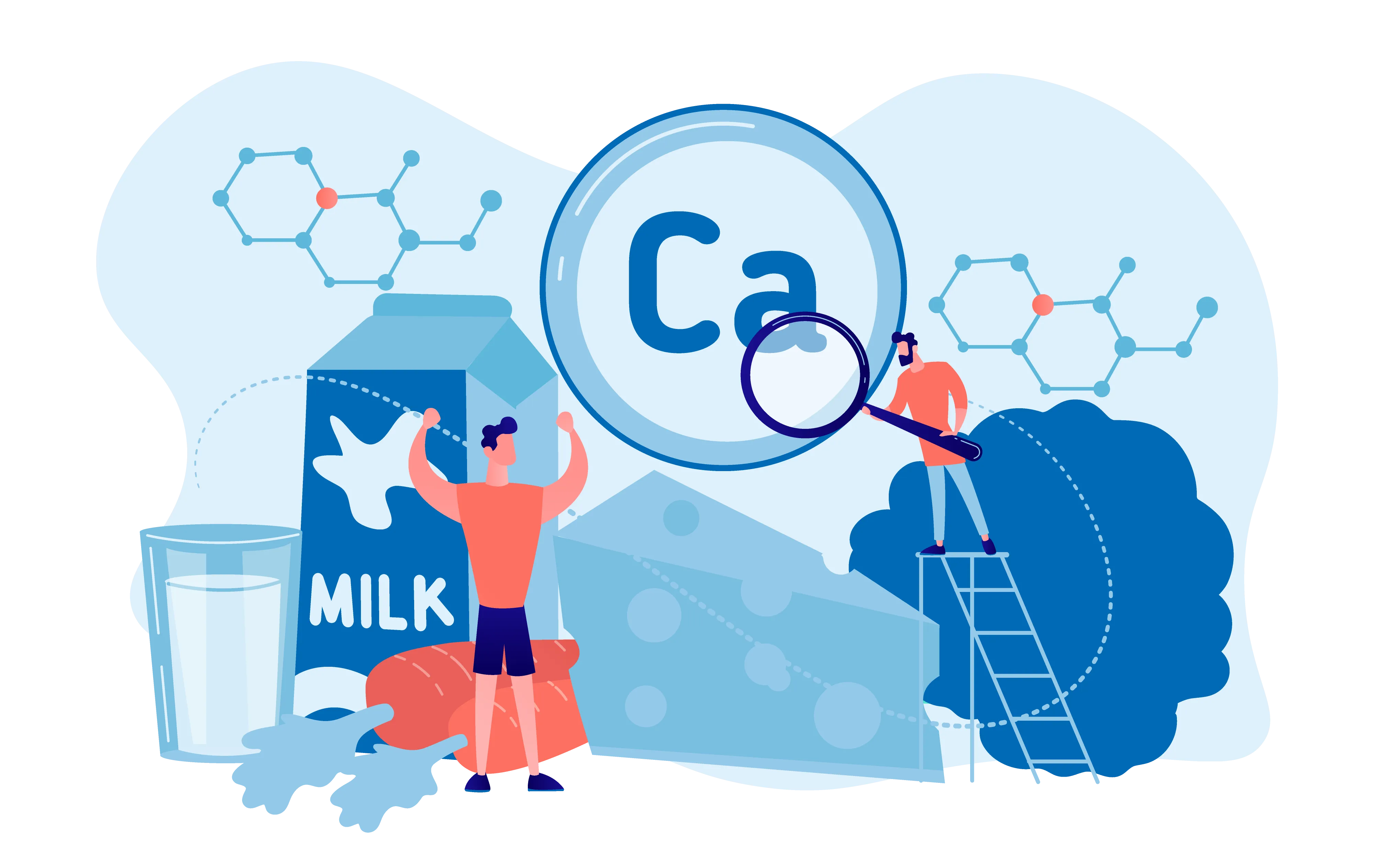
Dairy Products
13. Cottage cheese
India, and the internet, has no shortage of dairy-related recipes and while you may think of cottage cheese as an indulgence, an upside of eating it is actually weight loss! It is definitely among the most popular rich protein foods and will keep you from feeling hunger pangs for a good while. Protein value: 4oz of 1% fat cottage cheese contains 14g of protein and 81 calories.
When it comes to cottage cheese, you can consume about 100 grams every day to meet your protein intake. The best way to cook your cottage cheese is by sautéing and adding salt to it. Once done, you can add it to any of your favorite dishes.
14. Soy milk
Is skimmed milk good for protein? It sure is. 1 cup contains 8g of protein and 86 calories. Can’t consume milk due to intolerance? No problem; try soy milk instead. An added benefit is that you get potassium and are left with not much of saturated fat. Protein value: 1 cup of soy milk contains 8g of protein and 132 calories.
In terms of soy milk, you can consume around three servings in a day. However, you will need to decrease the consumption if you plan on consuming other protein-rich foods. Given that it is milk, you can substitute your daily consumption of cow milk with soy milk in coffee, smoothies, or baking. However, be sure to balance your calcium intake with other calcium-rich foods.
Between these 22 top protein rich foods you’re sure to have tons of options for breakfast, lunch, dinner, and midday snacks too! Could there be any downsides to going heavy on protein? Well, overdoing anything isn’t smart. Too much protein cannot be processed by your body and is stored as fat, even as it puts pressure on your liver and kidneys, releasing more ammonia, amino acids, and urea in the blood.
Meat and Poultry
15. Chicken
Chicken is a popular staple in India, is extremely versatile, and can make its way into a range of dif+ferent dishes, from tandoori fare and biryanis to salads and noodles. While being a source of low-fat protein, chicken is also a source of niacin and phosphorus and promotes heart and eye health.
- Protein value: 3oz of skinless chicken contains 28g of protein and 141 calories.
Chicken and eggs are common answers to the question, “what are protein-rich foods?”. Your ideal consumption of chicken or any protein-rich food depends on how much protein your body needs. On average, you can add around 200gms chickens to your daily diet. One of the healthiest ways to consume chicken and get the most of its protein value is by baking it. This can help you not just boost your protein intake but also reduce your calorie intake.
16. Steak
Beef is a top choice for those on a high protein diet. While helping you improve muscle mass, beef is also rich in minerals and vitamins, notably Vitamin B12. Of course, one does not need much convincing to dig into a juicy steak but among the meats, beef is a huge provider of L-carnitine. However, keep in mind that leaner cuts provide more protein, and should be part of modern urban diets.
- Protein value: 3oz of steak contains 26g of protein and 158 calories.
Regarding red meat, the ideal consumption varies because of its health implication. To stay on the safer side and prevent any serious issues, World Cancer Research recommends having around 300-350gms of red meat in a week. And one of the best ways to make the most of your red meat is to ensure that the beef is grass-fed and broiled.
17. Lamb
From delicious curries like the Mughlai Karahi Gosht to much-loved specialties like Seekh kebab, lamb is a popular item in many Indian cuisines. In terms of nutrition, lamb is food rich in protein and offers a range of vitamins and minerals, such as iron, zinc, Vitamin B12, selenium, and zinc.
- Protein value: 3oz of lamb contains 23g of protein and 172 calories.
For lamb, you can enjoy around 65gms of roasted lamb. Ensure you consume lean cuts such as tenderloin, legs, or loin chops. You should also remove the fat as much as possible and grill the meat with herbs and vegetables of your choice.
18. Egg
Those who’d rather stay away from meat can turn towards eggs for their protein intake. Even otherwise, the egg is a superb option among protein foods as it is affordable to buy while being a great source of nutrients such as Vitamin D, copper, and Vitamin B6. The egg is also probably the most versatile kitchen ingredient and if you’re scientific in your approach to your diet, you already know that over 50% of an egg’s protein content is in the whites.
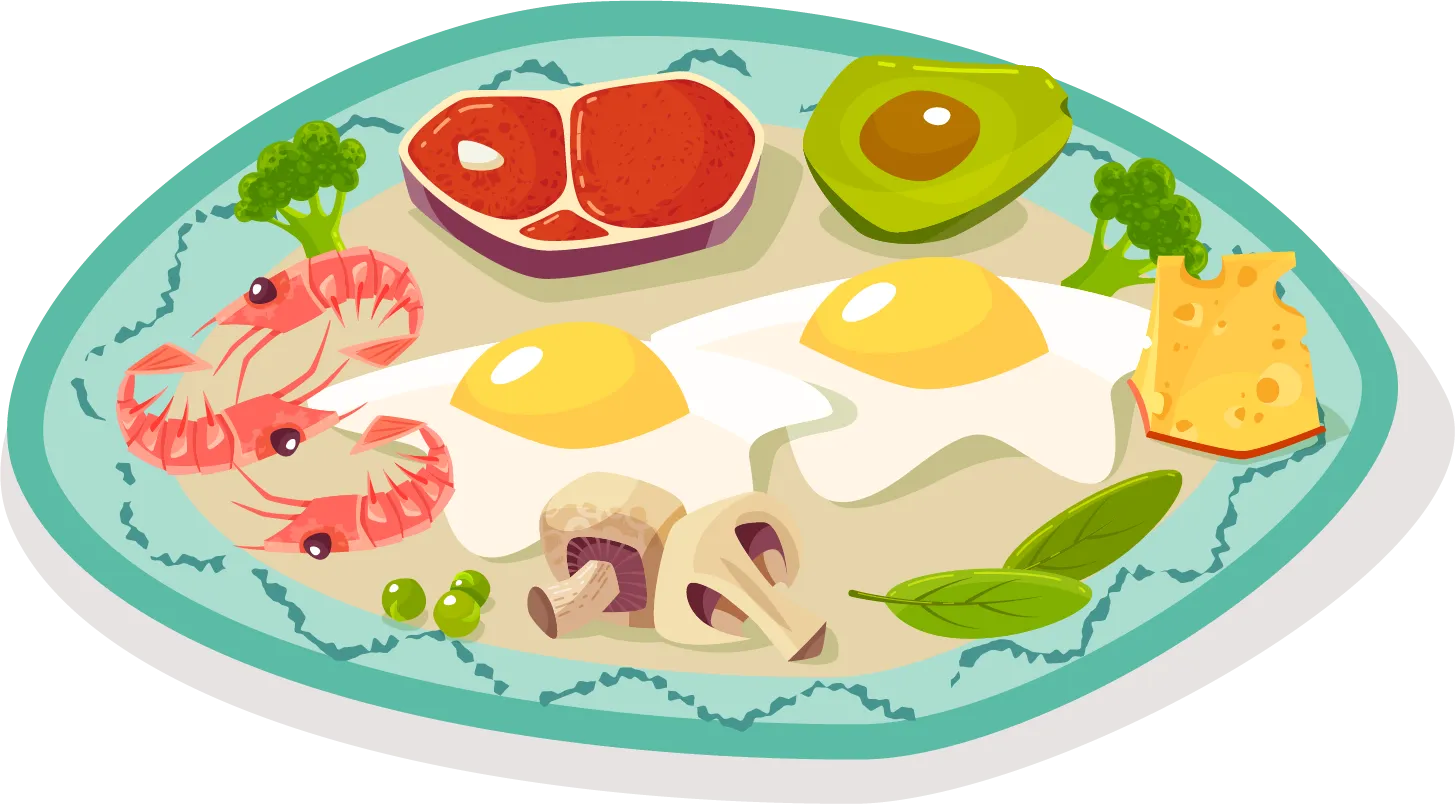
- Protein value: 1 large egg contains 6g of protein and 71 calories.
An egg is one of the most commonly known protein-rich foods, and you can safely consume around 1-2 eggs daily. But preparing it in a healthy way is just as important. To do that, you can boil your egg and add some pepper after cooking and enjoy it for your breakfast. This can help you get the most protein and reduce your fat consumption.
Seafood
19. Shrimp
Shrimp is among the more delicious protein rich foods and what makes it a winner is that experts suggest that it could even be good for your brain and heart. Shrimp contains omega-3 fatty acids, is low in calorie content, and contains nutrients, like Vitamin B12, iron and selenium, and antioxidants.
- Protein value: 3oz of shrimp contains 20g of protein and 101 calories.
Although it features among the top protein-rich foods, overconsumption of shrimp can have adverse effects on your health. To avoid that, you should stick to consuming 227-340 grams of shrimp in a week. The healthiest way to cook shrimps is by cooking them normally until they have a firm texture and reddish or pinkish color. After you see the color, you can simply add it to curries or other meals.
20. Tuna
Tuna is rich in omega-3 fatty acids and consuming it twice a week can do your overall health a world of good. Why? This is because tuna improves health across the board, from positively impacting your heart, blood pressure, immune system, and blood circulation to improving your skin and keeping depression at bay!
- Protein value: 3oz of tuna contains 22g of protein and 99 calories.
Fish can be high in mercury which can negatively affect your health. To avoid the negative impacts, you should limit your consumption of light mercury fish like tuna to 350-400 grams every week. To add one of the best protein-rich foods to your diet, you simply make a tuna sandwich with your choice of vegetables.
21. Scallops
If you live along the coastline then make sure to dig into soft, juicy scallops every now and then. Every bite is filled with taste and offers a burst of nutrients. Scallops are the highest protein food as it contains 80% protein. A single serving also provides you with iodine, phosphorus, and Vitamin B12.
- Protein value: 3oz of scallops contain 14g of protein and 75 calories.
Although considered one of the healthiest seafood, excess consumption of scallops can become a problem. To enjoy its benefits without risking the side effects, you should eat no more than 340 grams of scallops in a week. Since scallops naturally have a great flavor, you do not need to add much while cooking them. One of the simplest ways to cook scallops is to sprinkle salt, garlic, and pepper. After that, sear them in olive oil and butter until you see a nice crust. You can either add to this one of your favorite dishes or simply eat them whole.
22. Lobster
If lobster is a delicacy, it sure is one that nourishes. It provides you with calcium, vitamin A, iron, copper, selenium, phosphorus, zinc, Vitamin B12, Vitamin E, magnesium, omega-3 fatty acids.
- Protein value: 3oz of lobster contains 16g of protein and 76 calories.
To meet your protein intake, you can eat one lobster every week and couple that with other protein-rich foods. One of the common and easy ways to cook a lobster is by steaming it. In order to have beautifully cooked lobster, steam it for 7 minutes in the first round and then 3 minutes again. To check if your lobster is done, check the color of the meat. If it is white, it is cooked, but if it is translucent, you will need to cook for a longer period.
What is High Protein Diet?
A high protein diet includes foods where more than 25% of total calories come from protein. Many of these protein rich foods include a large number of proteins, saturated fats, and a low amount of carbohydrates. Some examples of protein rich foods include eggs, chicken, seafood, soy, black beans, lentils, and low-fat dairy foods.
High protein diets are those that encourage you to include more protein and less carbs and fats in your diet. Such a diet helps boost your energy and athletic performance, and aids in weight loss. Research also suggests that a high protein diet may help overweight or obese women lose weight while retaining their lean muscle mass [2].
Usually, a high protein diet will have 30% calories from proteins, 40% from carbohydrates, and 30% from fat. But you can add or change this ratio according to your body’s needs. Some diets commonly considered as high protein diets include:
Dukan Diet
This is low fat, low carbohydrate, and high protein diet. It is based on the principle that losing weight is difficult when you are hungry. It includes fat-free dairy and lean proteins that help you feel full.
Scarsdale Diet
In the late 1970s, this high protein diet gained huge popularity. It limits your calorie intake to 1000 calories a day. Under this plan, your meal will consist of around 22% fat, 34% carbs, and 43% of proteins.
Atkins Diet
This diet basically restricts carbs and allows you to eat more protein and fat.
Whole30
This is a 30-day diet to reset your body. It aims at eliminating sugar, grains, alcohol, legumes, and dairy. It generally includes only vegetables, fruits, and meat.
As a general rule, a high protein diet will typically require you to:
- Include protein in all your meals
- Have protein rich snacks
- Ensure that your breakfast includes proteins
- Avoid processed carbohydrates
Benefits of Protein Rich Foods
Consuming protein rich foods offers you many benefits. Some of them include the following.
- Strengthens your bones
- Strengthens your immune system
- Boosts your muscle mass and increases strength
- Lowers food and late-night snack cravings
- Help lose weight and maintain overall body weight
- Helps you feel fuller for longer, reduces your appetite and hunger levels
- Lowers your blood pressure and supports heart health
- Keeps you physically fit even if your age and boosts energy levels
- Promotes cell and tissue recovery by helping your body repair itself
- Boosts body metabolism and increases the number of calories you burn
Protein Rich Foods for Weight Loss
Here is a list of high protein-rich foods that help in weight loss:
- Almonds
- Peas
- Lentils
- Broccoli
- Cauliflower
- Black beans
- Corn
- Chicken breast
- Legumes
- Guava
- Turkey
- Pistachios
- Chia seeds
- Asparagus
- Pumpkin seeds
Protein Rich Foods for Weight Gain
Here is a list of high protein rich foods goods for weight gain:
- Peanuts
- Cheese
- Milk
- Steak
- Yogurt
- Potatoes
- Oats
- Quinoa
- Avocados
- Healthy cereals
- Dark chocolate
- Whole eggs
- Salmon and oily fish
- Whole grain bread
- Nuts and nut butter
- Protein shakes and smoothies
- Protein bars and supplements
Nutritional Value of Protein Rich Foods
As you know from various diet charts, protein contributes to the total calories you consume. Generally, protein and carbohydrates contain 4 calories per gram. Fats contain 9 calories per gram [1]. But this is not all when it comes to protein’s nutritional value.
The nutritional value of protein is dependent on the amount of amino acids it contains. Amino acids are building blocks that help your body make new proteins. These include bone and muscle as well as compounds like hormones and enzymes. Your body can also use amino acids as an energy source.
There are about 20 different types of amino acids that are divided into essential and non-essential amino acids. Non-essential amino acids are those that your body can make and includes 11 types of acids. Essential amino acids are not created by your body and there are 9 types in this category.
You can get these essential amino acids from a few different foods. Including them in your diet is vital for better health. These can be divided into 3 categories:
Animal Products
These have all the essential amino acids that your body needs and are therefore known as complete proteins. Beef, chicken, dairy products, and fish come under the list of complete proteins.
Plant-based Protein
Nuts, lentils, whole grains, and beans come under plant-based protein sources. These lack at least one essential amino acid, which is why they are considered to be incomplete proteins. But there are some proteins that are considered nearly complete sources of protein in this category too! These include:
- Amaranth
- Quinoa
- Buckwheat
- Chia and hemp seeds
- Soy products
Soy products like tofu, soy milk, and edamame also have nearly all the essential amino acids that your body needs.
If you are following a vegetarian or vegan diet, make sure to include various combinations of plant-based proteins. This will help ensure that your body gets an adequate mix and amount of amino acids. For instance, have both quinoa and amaranth in a day and combine cereals and legumes in your meal such as baked beans on whole-wheat toast. This way, you can get the essential amino acids needed by your body.
How much Protein do You Need?
The amount of protein your body needs depends upon age, size, activities, and pregnancy status. However, as an adult, you need approximately 50g of protein a day and pregnant women require more, even up to 65g of protein a day.
Whether you side with vegetarian or non-vegetarian, there are plenty of rich protein foods that you can consume at various points of the day. From eggs and seafood to legumes and dairy products, picking the right protein foods ensures that your meals are both tasty and healthy.
Is Protein Powder Helpful?
Protein powder is a dietary supplement made from extracting animal and plant foods. The common forms of the supplement include whey, soy, and casein protein. Although protein powder is popular among fitness freaks and athletes, many people depend on it for meeting daily protein needs or to maintain weight. Protein powder helps boost physical performance and build muscles.
Taking protein powder before a workout help provide amino acid so that your body doesn’t make use of the protein in your muscles to fuel a workout. Consuming it post-workout helps repair damaged muscles. You do not necessarily need protein powder as you can meet the daily protein requirement by consuming protein rich foods. However, if your goal is to build muscle mass and strength, you may consume a protein supplement. But, consult your nutritionist or dietician before consuming it as the exact dosage depends on your age, gender, health, and level of activity.
An easy solution to getting the right amount of protein into your diet on track is to get professional nutrition insights that suit your body type, metabolism, and activity levels. Once you have your health needs outlined, make use of these powerful protein foods to live healthier!
For more health tips, keep checking out, Bajaj Finserv Health.
References
- https://www.healthline.com/nutrition/10-reasons-to-eat-more-protein#section1
- https://www.myfooddata.com/articles/foods-highest-in-protein.php
- https://www.peacockspoultryfarm.com/cooking/the-health-benefits-of-eating-chicken/
- https://www.beefcentral.com/news/community-and-lifestyle/beef-nutrition/11-health-benefits-of-eating-beef/
- https://www.healthline.com/nutrition/20-delicious-high-protein-foods#section9
- https://www.beefcentral.com/news/community-and-lifestyle/beef-nutrition/11-health-benefits-of-eating-beef/
- https://www.healthline.com/nutrition/foods/lamb#vitamins-and-minerals
- https://www.bbcgoodfood.com/howto/guide/ingredient-focus-eggs
- https://www.healthline.com/nutrition/is-shrimp-healthy#section3
- http://www.whfoods.com/genpage.php?tname=foodspice&dbid=105
- https://www.menshealth.com/nutrition/a19544008/6-power-foods-you-should-be-eating/
- https://www.medicalnewstoday.com/articles/303332#nutrition
- https://www.leaf.tv/articles/differences-between-kidney-beans-pinto-beans/
- https://www.healthline.com/nutrition/pinto-beans-nutrition#1.-Loaded-with-nutrients-
- https://www.healthline.com/nutrition/lentils#nutrition
- https://www.healthline.com/nutrition/11-proven-benefits-of-quinoa#section1
- https://www.healthline.com/nutrition/adzuki-beans
- https://www.healthline.com/nutrition/healthiest-beans-legumes#section5
- https://www.healthline.com/nutrition/soy-nuts#1.-May-boost-heart-health
- https://www.bbcgoodfood.com/howto/guide/health-benefits-pumpkin-seeds
- https://www.healthline.com/nutrition/11-proven-health-benefits-of-chia-seeds
- https://www.healthline.com/health/milk-almond-cow-soy-rice#rice-milk
Disclaimer
Please note that this article is solely meant for informational purposes and Bajaj Finserv Health Limited (“BFHL”) does not shoulder any responsibility of the views/advice/information expressed/given by the writer/reviewer/originator. This article should not be considered as a substitute for any medical advice, diagnosis or treatment. Always consult with your trusted physician/qualified healthcare professional to evaluate your medical condition. The above article has been reviewed by a qualified doctor and BFHL is not responsible for any damages for any information or services provided by any third party.

